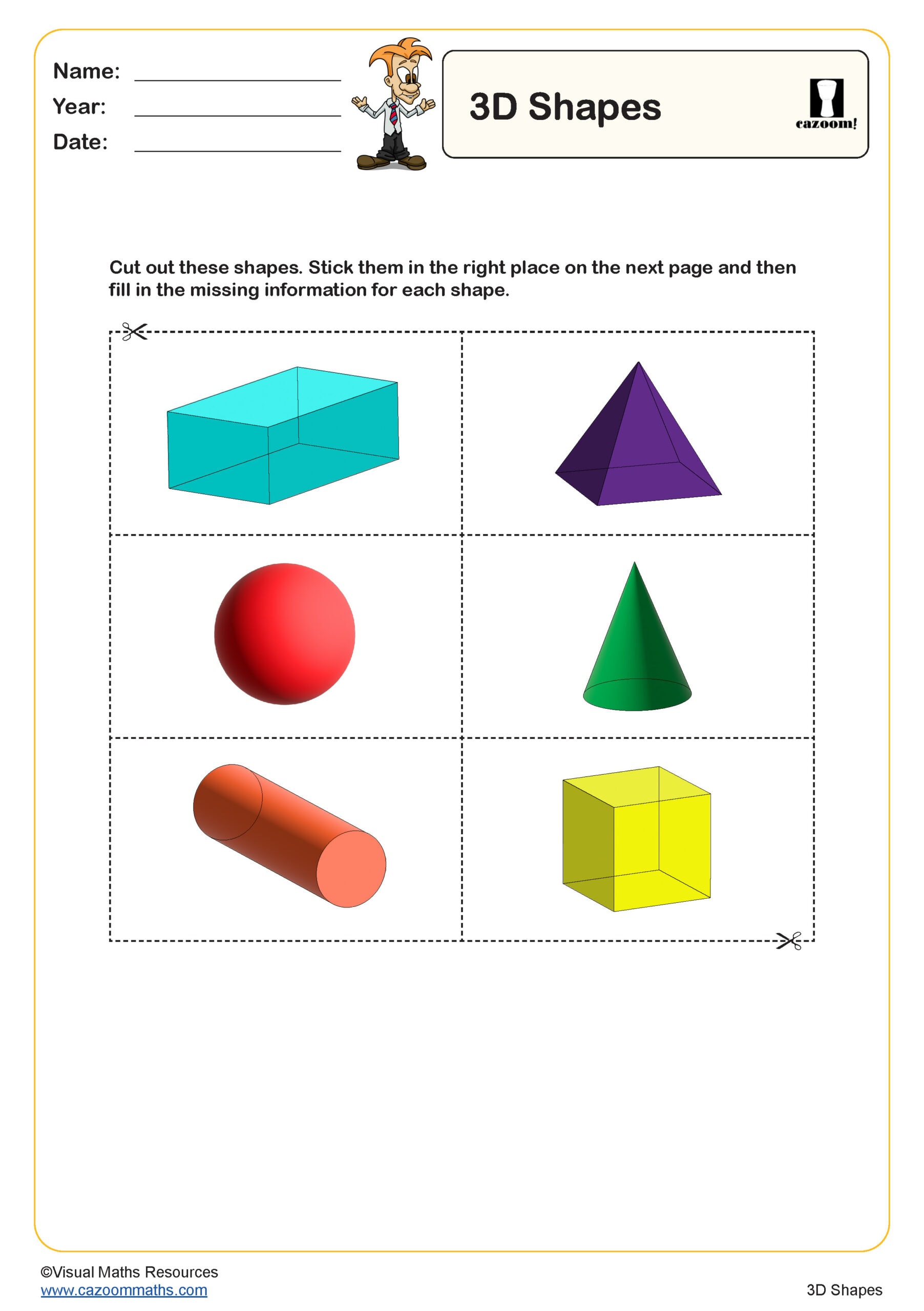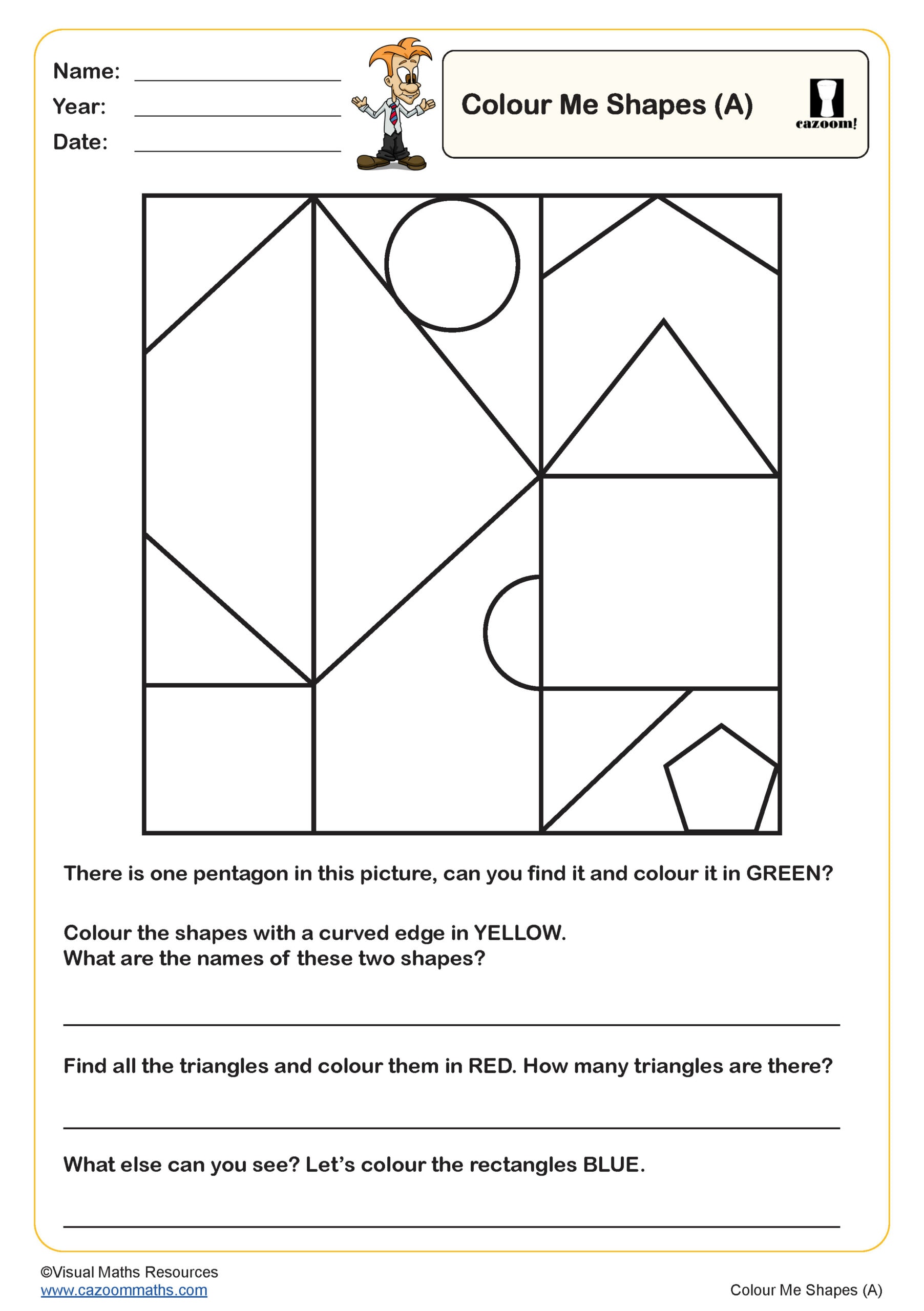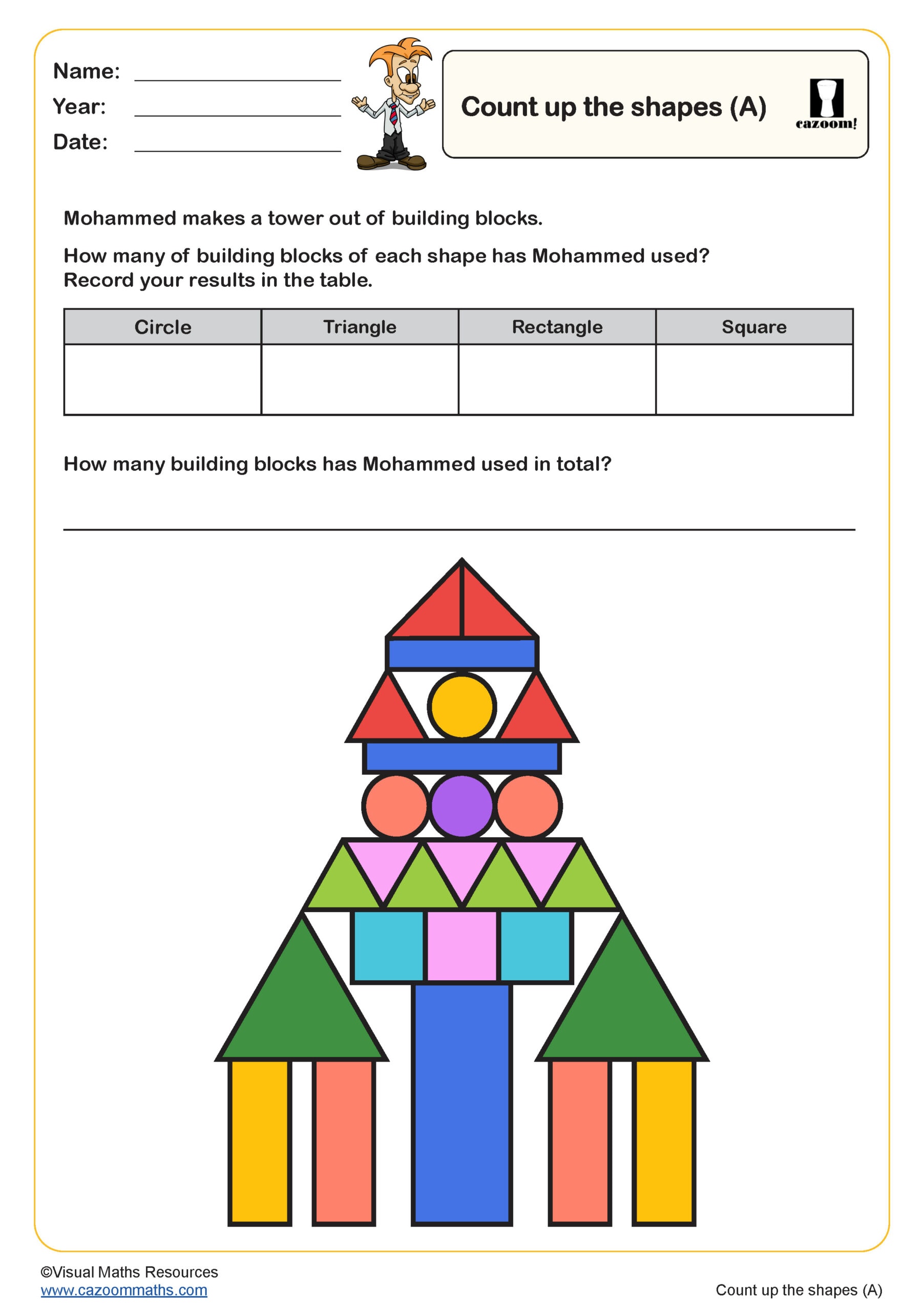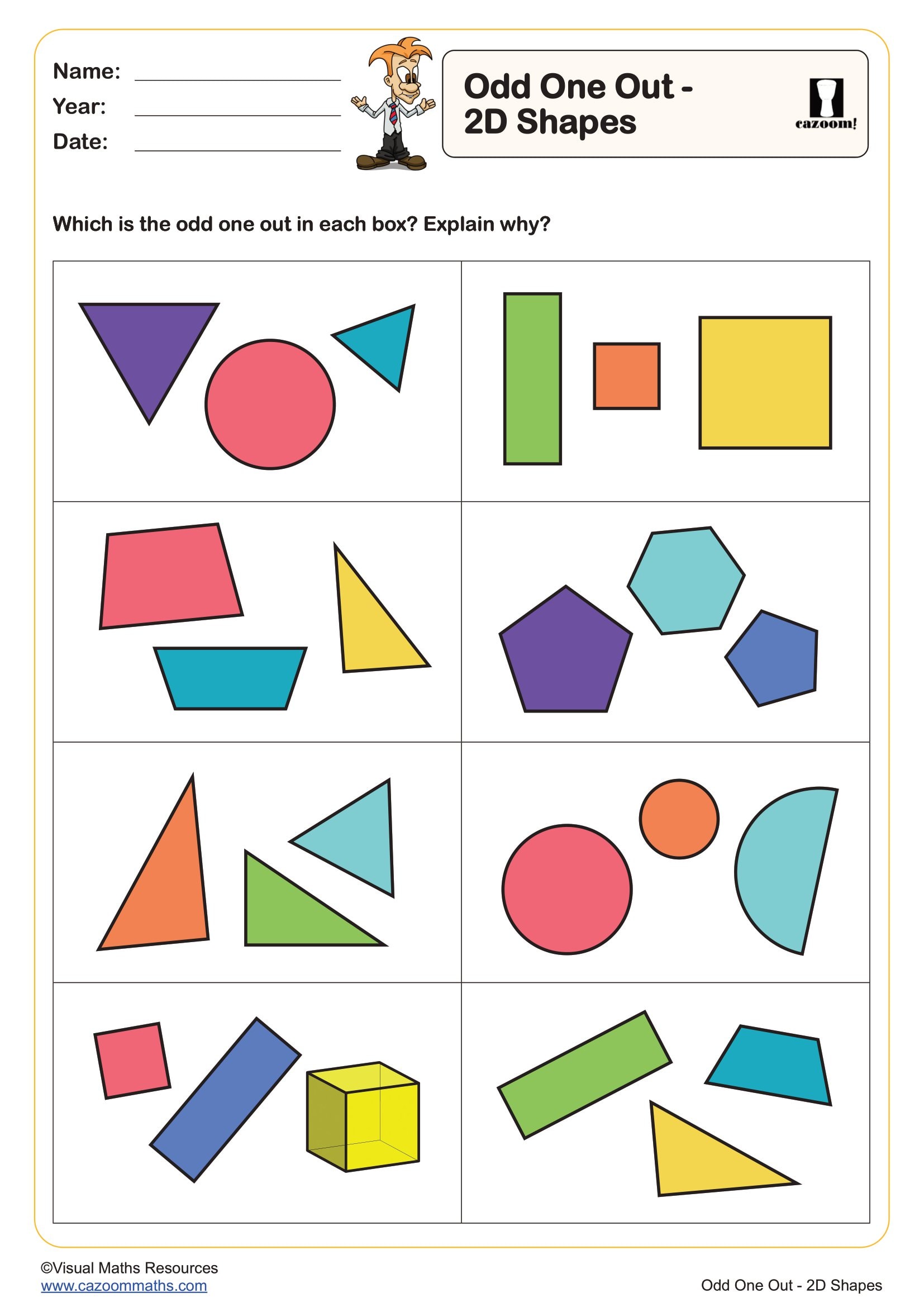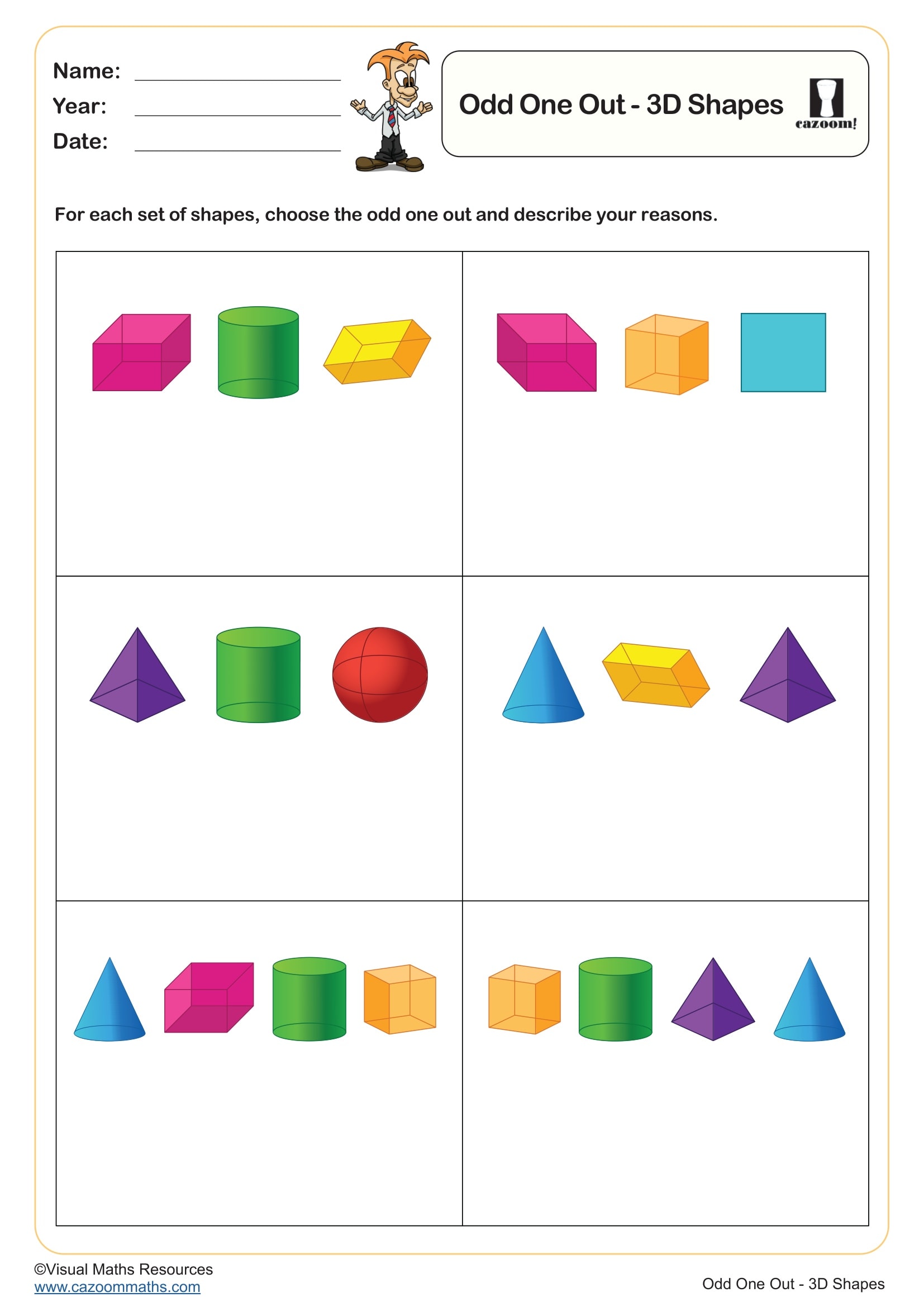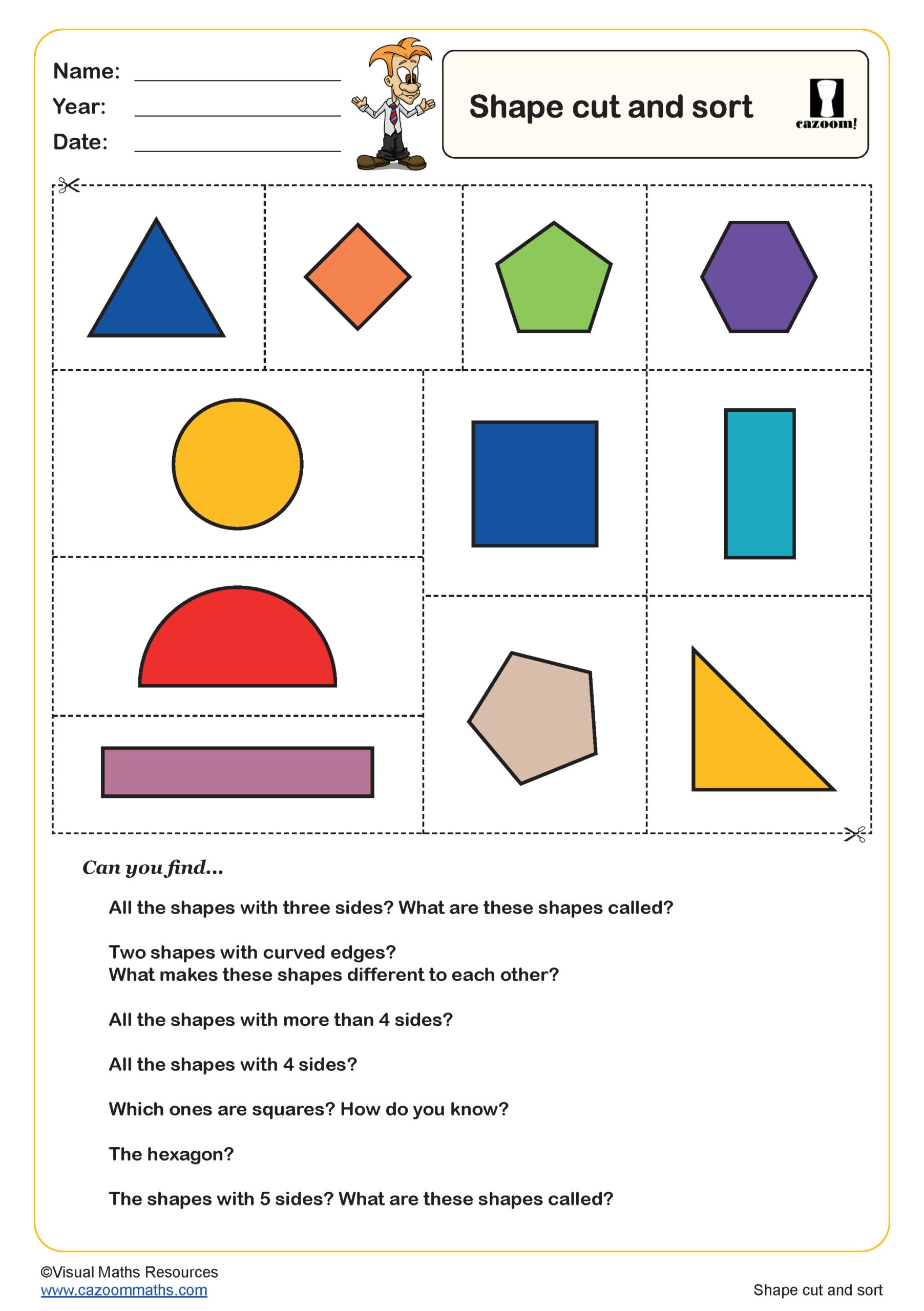Year 1 Properties of Shapes Worksheets
Year 1 Shape Worksheets - Printable PDFs with Answer Keys
Download our comprehensive KS1 properties of shapes worksheets in printable PDF format right away to boost your students' geometric understanding. These ready-to-print and use Year 1 maths worksheets cover essential topics including 2D shape recognition, 3D shape identification, shape sorting, pattern making, and basic shape properties. Our collection features Shape Recognition Practice, Shape Sorting Activities, Shape Pattern Worksheets, and Shape Hunt exercises. All of our Year 1 Geometry Worksheets come with separate answer sheets for quick marking and easy assessment of pupil progress.
What's Inside Our Year 1 Shape Recognition Worksheet Collection?
These Year 1 properties of shapes worksheets contain diverse activities that cover all fundamental geometry skills for KS1 learners. Students practice identifying common 2D shapes like circles, squares, triangles, and rectangles through varied visual exercises. The worksheets include 3D shape recognition activities, shape sorting games, and pattern-making tasks. Each resource targets specific learning objectives while maintaining engagement through colourful designs and age-appropriate content for young mathematicians exploring the world of shapes.
• Circle, square, triangle, and rectangle recognition
• 3D shape identification activities
• Shape sorting and classification tasks
• Pattern recognition using shapes
• Shape hunting exercises
• Basic properties exploration
Why Shape Recognition Matters: Building Strong Maths Foundations
Our printable PDF Properties of Shapes worksheets provide structured practice that reinforces classroom learning and builds geometric confidence in ages 5-6. All of our primary geometry resources support different learning paces and help teachers identify areas where students require additional support with shape recognition. Regular practice with our worksheets develops essential spatial skills that form the foundation for future mathematical learning. Visual and hands-on activities make abstract geometric concepts more concrete and understandable for Year 1 pupils, developing their shape vocabulary.
• Build strong geometric foundations
• Support different learning speeds
• Identify shape knowledge gaps quickly
• Make abstract concepts concrete
• Boost spatial awareness confidence
• Develop mathematical vocabulary
How Children Use Shape Skills in Everyday Life (You'll Be Surprised!)
Children use their shape recognition skills daily when identifying objects around their home, school, and playground environments. Building with blocks and toys provides natural opportunities to explore 2D and 3D shapes in practical situations. Art and craft activities involve shape skills through cutting, drawing, and creating geometric patterns. These everyday experiences reinforce the shape concepts learned through worksheet practice and classroom activities, making geometry relevant and meaningful for young learners.
• Identifying shapes in everyday objects.
• Building and construction play activities.
• Art and craft shape exploration.
• Recognising shapes in architecture and nature.
• Sorting and organising items by shape.
• Creating patterns and designs using shapes.
